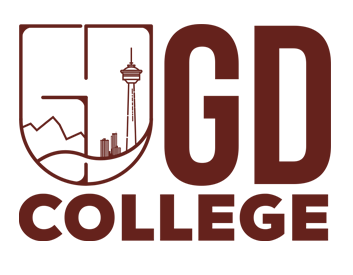
The beauty and cosmetology sector is often overlooked in national conversations, yet it quietly powers a large share of Canada’s economy and communities. In 2024 the Canadian hair and nail salon market alone was worth roughly US$7 billion (≈ CAD $9.3 billion).
- This industry is forecast to grow at about 2.9% annually through 2031, fueled by rising disposable incomes and a strong self-care trend.
- In other words, behind the scenes of talk about tech or finance, tens of thousands of Canadians are building careers in beauty: cutting hair, doing nails, and offering spa and skin services. [Chart: Canadian beauty & salon industry revenue growth, 2015–2024]
Jobs in cosmetology are growing quietly but significantly. For example, IBISWorld estimates there were over 67,000 people employed in Canadian hair and nail salons in 2024.
In Alberta – home to cities like Calgary and Edmonton with booming construction and tech sectors – hairstylists and estheticians represent a stable and growing slice of the service economy. Indeed, many regional labour forecasts list hairstyling and related fields among occupations with steady demand.
Entry-level wages in salons tend to hover around $20–22 per hour (about $42–46 K per year), lower than technology fields but competitive in the services sector. At the same time, the number of small beauty businesses has climbed: Canada had about 5,200 beauty and cosmetics retail outlets (salons, spas, etc.) by 2024, growing roughly 4.4% per year since 2019.
This reflects both consumer demand and entrepreneurial interest – often as second careers or immigrant-owned start-ups. Many graduates from cosmetology programs immediately open their own studios or become booth renters, reinvesting in the local economy.
Crucially, the beauty sector is composed largely of gig-style and self-employed workers. Statistics Canada reports that hairstylists/barbers consistently rank among the top occupations for self-employed women.
In 2022, hairstylists were one of only five job categories (along with childcare, retail, real estate, etc.) that have remained most common for self-employed women since the 1980s. In practice, many stylists rent chairs or work on commission, lacking the standard benefits or job security of traditional employment.
This labor model has social implications: during the COVID-19 downturn, many salon workers were shut out of support programs because of their contractor status. Recent federal labour reforms are directly addressing this trend.
In June 2024, Parliament passed amendments (Bill C‑69) strengthening protections for gig workers – effectively presuming employee status unless an employer proves otherwise.
Although this law applies to federally regulated industries, it signals broader shifts: salon owners and provincial regulators will need to reassess classification. At minimum, the new rules reflect growing political recognition of gig-economy jobs.
Industry observers note that even the federal election campaign discussions are increasingly acknowledging “alternative” careers. This momentum could spur further support (training grants, business licensing reforms, health benefits) for beauticians and barbers who have traditionally flown under the radar.
Equally important is how Canada’s diversity drives the demand for inclusive cosmetology services. As of 2021, nearly 23.0% of Canadians were foreign-born – the highest proportion on record – and cities like Calgary and Vancouver are even more multicultural. Clients arriving from Asia, Africa, Latin America, or the Middle East bring hair and skin-care needs that differ widely from Eurocentric norms. Cosmetology education and salon services must adapt: training in textured hair (e.g. Afro-Caribbean curls), head-covering etiquette (e.g. under hijab), and the latest global beauty trends. Salon clientele also span a wide range of age, culture, and gender identities.
The most successful salons embrace DEI (diversity, equity, inclusion) not only in hiring but in service styles, languages spoken, and community outreach. For example, a Calgary stylist might routinely provide threading (a hair-removal technique popular in South Asia), multi-lingual consultation (e.g. French, Mandarin, Punjabi), or specialized coloring for non-European hair types. In short, multicultural competency is now a must-have skill.
In this context, private career colleges play a pivotal role in both education and social support. Institutions like Calgary’s GD College train students not just in technical skills, but in entrepreneurship and life skills.
GD College’s mission, for instance, is “to empower students by providing the skills and knowledge they need to achieve financial independence through beauty and cosmetology”. The college advertises industry-recognized certifications, flexible scheduling, and a direct pathway to careers – all designed to help diverse students (including newcomers and single parents) succeed.
Today’s cosmetology programs are often multi-skill: a single diploma can cover hairstyling and esthetics and nail technology, producing graduates who can pivot between services or manage their own salon with a broad client base.
Our school also integrates mental wellness, financial literacy, and digital learning into the curriculum. Mental health is critical: beauty professionals often work long days on their feet and manage client expectations, so counseling on stress management and self-care helps reduce burnout. Financial literacy modules (e.g. bookkeeping for small businesses, tax obligations for contractors) prepare graduates to run booth-rentals or home studios. And since the pandemic, hybrid and online learning has expanded: theory courses (anatomy, chemistry of products) can be taken remotely, and we are also experimenting with digital or VR simulations for practice.
Recommendations for Global Impact
Looking ahead, Canadian cosmetology educators can seize international opportunities. For example, GD College or similar schools could develop bilingual training programs (English/French) targeting Francophone markets in Africa and Europe. A
Investing in AR/VR modules would make training accessible globally. For instance, a college could pilot a VR hairstyling simulation by 2025 and track student competency improvements (e.g. 90% passing rate on virtual skills exam). Finally, creating stackable micro-credentials (short courses with industry certification) in niches like “curly hair specialist” or “men’s grooming” could be marketed worldwide.
A possible target: partner with an overseas beauty federation to offer three 100-hour micro-certificates in skincare, each with 100 graduates by 2027. These focused programs are measurable, timely, and leverage Canada’s reputation for high-quality vocational education.
In summary, Canada’s cosmetology and beauty sector is far more than “women’s work” – it’s a resilient, growing industry with deep economic and social value. Policymakers and educators should note that grooming and esthetic services are vibrant contributors to jobs, entrepreneurship, and cultural inclusion.
By recognizing hair salons and estheticians as part of the solution (to unemployment, integration of immigrants, and local small business development), Canada can ensure this sector continues to thrive. With data-backed investments and inclusive strategies, cosmetology education can produce skilled professionals who uplift communities – and who, in turn, become ambassadors for Canadian expertise around the globe.
Sources: Verified Market Research; Statistics Canada; Government of Canada (Budget 2024 labour reforms); Indeed (salary data)

